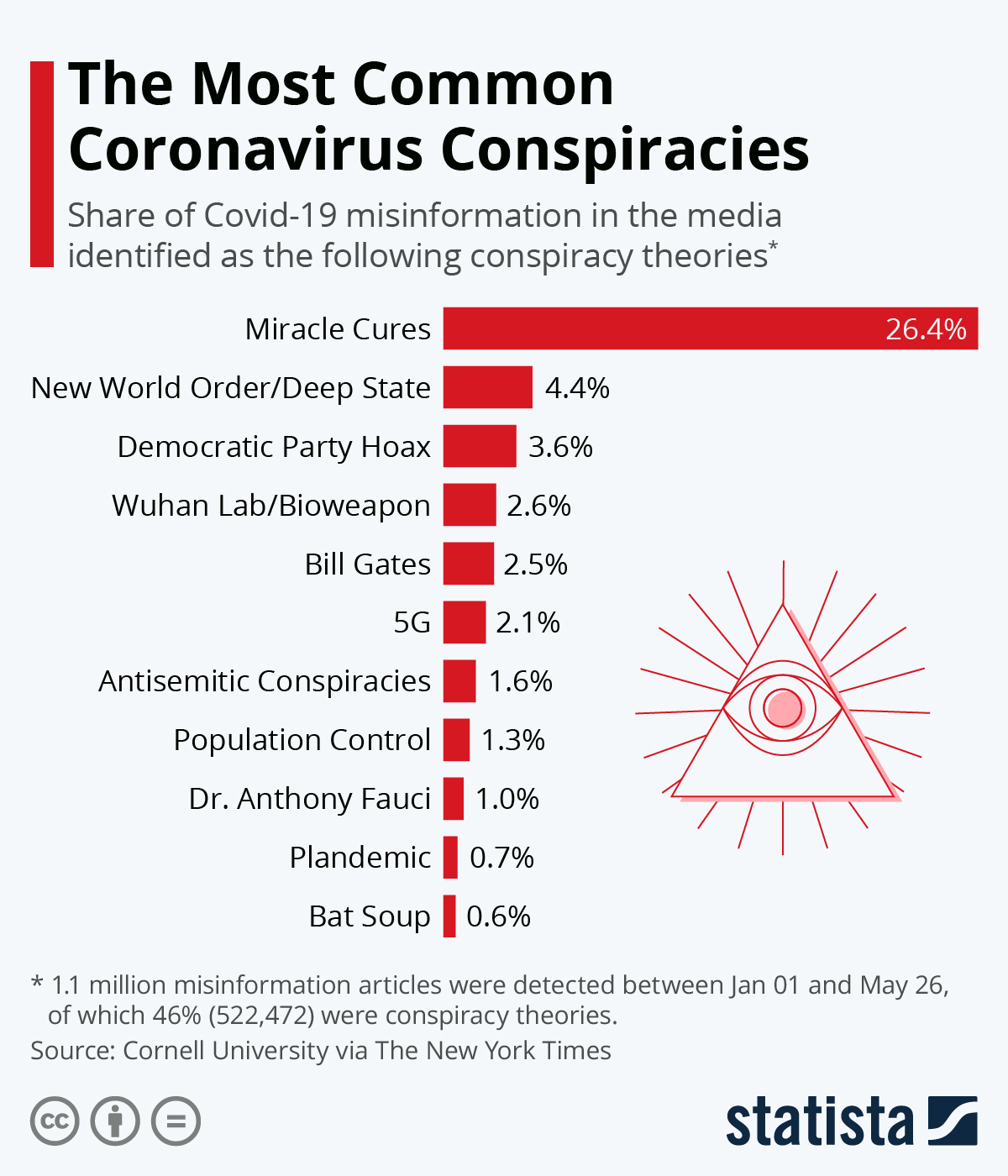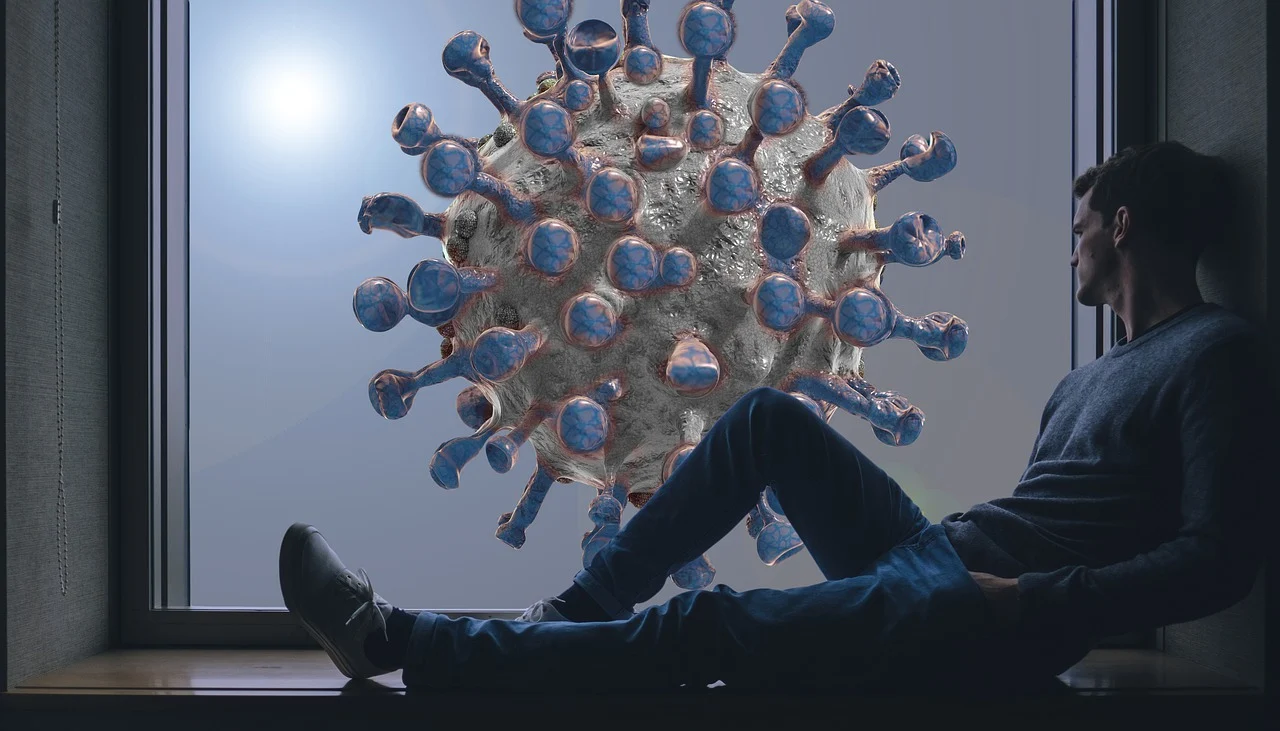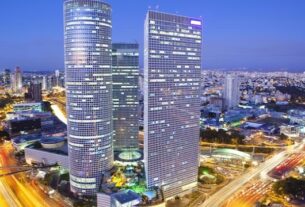Cornell University conducted an analysis of Covid-19 misinformation, falsehoods, and conspiracy theories circulating in the media, and its findings were published by The New York Times. The researchers analyzed 38 million articles published in the English language globally between January 01 and May 26, finding that 1.1 million contained misinformation. That represents just under three percent of the entire Covid-19 conversation. One of its central findings is that the president of the United States is mentioned in nearly 38 percent of all articles containing misinformation, making him the largest driver of the infodemic (falsehoods about Covid-19).
Out of the 1.1 million articles found to contain spurious information, 46 percent fell under the category of misinformation/conspiracies. The study noted 11 different conspiracies ranging from Covid-19 being developed as a bioweapon in a Wuhan laboratory to mentions of the deep state and “a new world order.” Unsurprisingly, Bill Gates also popped up in conspiracy theories, as did Dr. Anthony Fauci who was accused of exaggerating deaths and being an accessory to the pharmaceutical industry.
The most prevalent conspiracy theory by far was the miracle cure and it was the point of convergence for several different misinformation themes. Notably, they include President Trump advocating for hydroxychloroquine and chloroquine despite the fact that no peer-reviewed data found them to be effective in treating patients with Covid-19. Similarly, when Trump was ridiculed for claiming ultraviolet light and disinfectants might be used as a treatment, the number of articles in the “miracle cures” category of disinformation climbled from 10,000 to 30,000 in just one day. The study directly attributed the president with driving the above falsehoods.
 You will find more infographics at Statista
You will find more infographics at Statista
Read more about: Coronavirus, COVID-19, Pandemics




